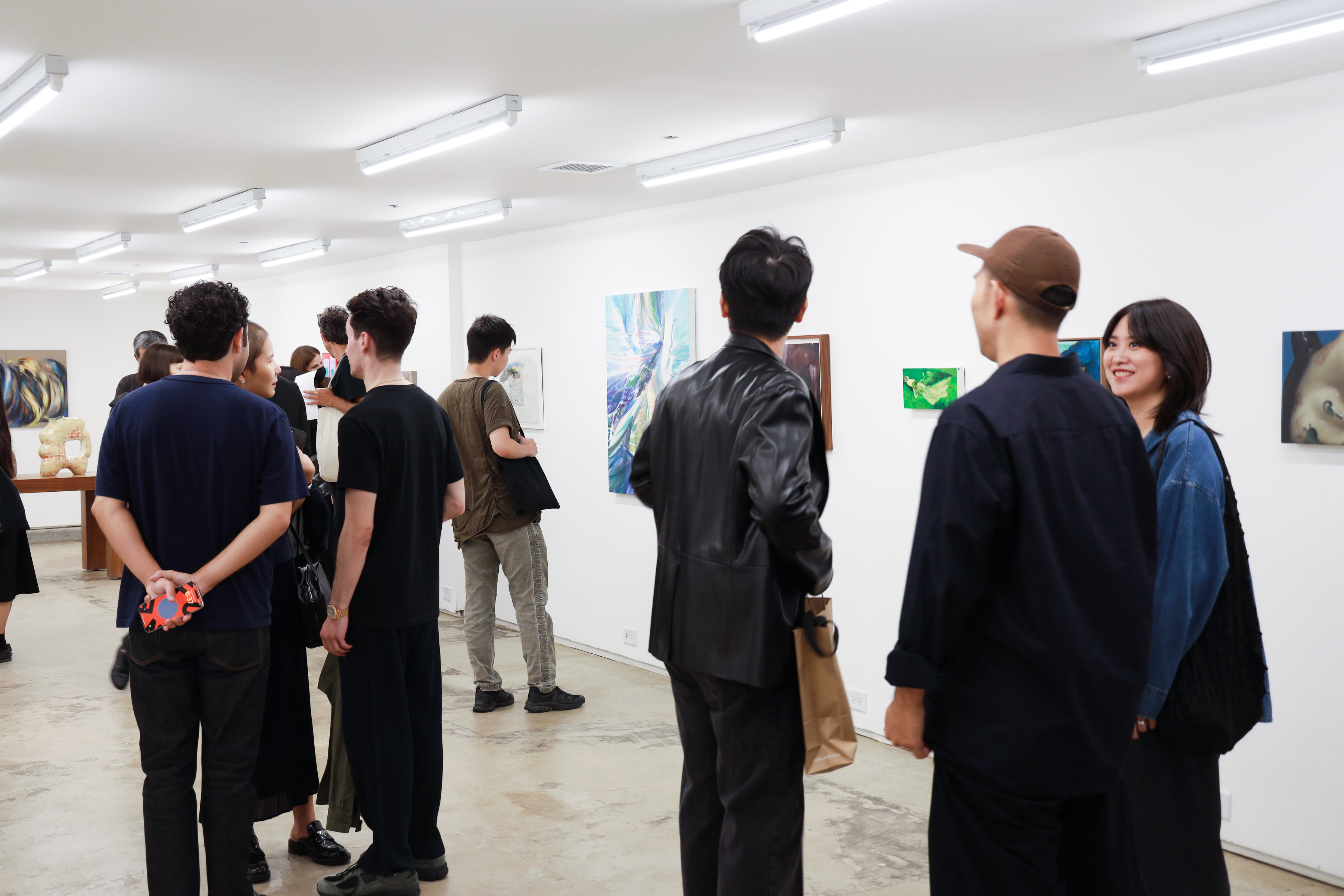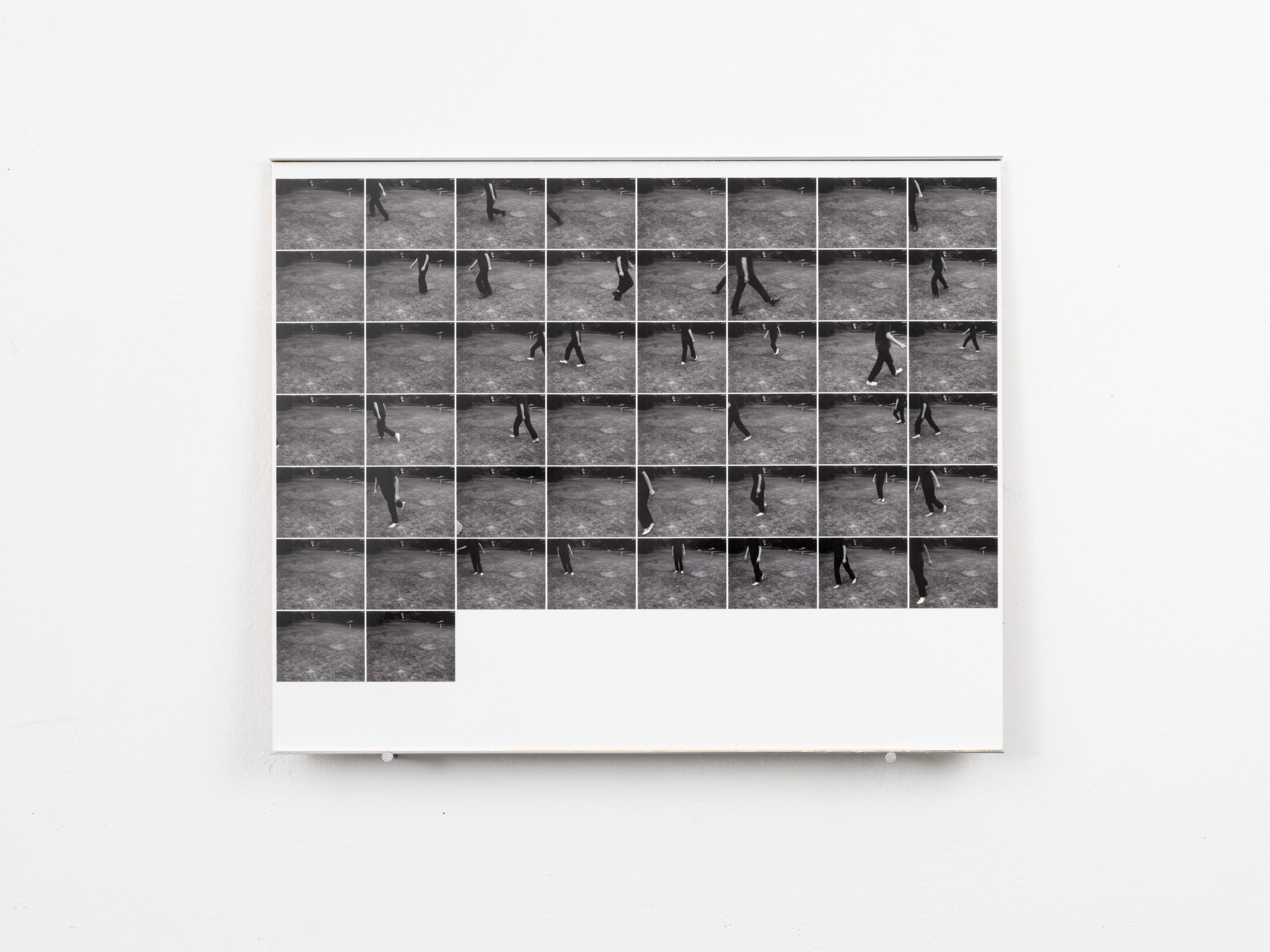An isolated figure strides through space. Their skin is of unpolished bronze, their limbs so thin they could be snapped by a single thought, and their face is blurred: indistinct. The figure is alone, but they could be anyone. They could be one, or they could be many. Even the neutral pronoun, ‘they’, could suggest plurality. The figure is Alberto Giacometti’s Walking Man I, and it is one of six numbered sculptures in collections around the world. Physically separate, but linked by human design, the sculptures represent the essential paradox of human existence: our common experience of isolation. Interwoven Souls: United in Loneliness, is a Sotheby’s exhibition inspired by the emotional depths of Walking Man I. The exhibition is curated by Valentine Botteri, Kanishka Porwal, and Monica Zhang, and features nine artists. Each contributor responds separately to the experience of loneliness and portrays themes as varied as isolation, memory by translation, and dreams. However, their separate responses connect defiantly with one another, showcasing the commonality of society’s experience of loneliness.
Upon entering the gallery, the first painting displayed is Aleah Chapin’s The Space Between Our Separateness. The painting is split across three canvases: on the left, facing outwards, is the suggestion of a human figure: the legs are distinct, but the torso and face disappear in a swirl of cool blue paint. On the right, the image is mirrored. The swirling background is the result of Chapin’s experimentation with “automatic drawing”, a technique borrowed from the surrealists which involves allowing the non-dominant hand to roam freely. Chapin’s roaming unconscious pulses up from the human figures and across the divide between the three canvases, meeting, having shifted from cool blue to a warm pink, in between the two figures. The flowing lines leap across the gaps like electrical messages across a neural synapse to connect in a flush of pink: the seemingly isolated figures at the edges of the canvas are joined by the artistic manifestation of their thoughts.
%20copy.jpeg)
Like Chapin’s figures, the works in Interwoven Souls are physically separate. They are placed around the gallery in no particular order, and their styles are as diverse as the human society that they represent. From Chapin’s oil on canvas to pen and paper to multimedia sculpture, the artworks are entirely disconnected in their medium. However, many of them share a pink-and-blue palette, and all translate the same feeling of loneliness. The phrase ‘lost in translation’ is apt: if each of the works are a different translation of the same feeling, perhaps, the key to the paradox of human loneliness lies in the invisible links between the works. Like when a word is translated from one language to another, it is the abstract meaning between the words and languages that is retained. After all, in The Space Between Our Separateness, it is in the crossing of the gaps between the canvases that the viewer sees the physical connection between the figures. In another of Chapin’s paintings, Biosphere, the space between the two figures portrayed glows with light, as though it holds the key to some unspoken truth. The blank spaces between the artworks are where we can connect them. The artists, like bilinguists, translate their thoughts of loneliness into tangible forms. It is the abstract concept of isolation that ties the exhibition together.

Perhaps the most tangible of these forms are the exhibition’s sculptures. Nazli Efe contributes two works to the exhibition: Cyprus (Diving Off From The Same Rock and Defeating My Father in The Swimming Race Every Summer) and Internal Nebula (My Father’s Brain Surgery and Unspoken Words), both of which make use of wax sculptures placed in water. The formlessness of the water evokes the shifting, impermanent quality of memory, creating a divide between the artist and her father as he was in these memories. The sculptures also remind us of the separation between the viewer and the artist. Literary critic, Wolfgang Iser, writes that authors translate thoughts into words, and readers translate those words back into thoughts. Elements of meaning are lost in each translation, and the reader’s response is vital: interpretation of the text is impossible without reader input. The same is true of Efe’s sculptures. She translates her memories into physical form, and the viewer must translate these forms into their own version of meaning. The artist and viewer can’t experience the same memory, and the physical form of Efe’s memories will evoke different recollections for the viewer. Yet artist and viewer are connected through the tangible form common to their respective interpretations: they are united in their collective translation.
%20copy%202.jpeg)
Curators Botteri, Porwal, and Zhang, compare Efe’s wax sculptures to the Rorschach test, in which viewers are shown a series of inkblots, and asked to interpret what they mean. D. W. Zinsser, another featured artist, also contributes work with this effect. The longer the viewer looks at Zinsser’s shifting, elusive pen drawings, the more they can discern. A Beautiful Broth, for example, initially appears to be an amalgamation of abstract lines and shapes. However, soon a baby appears from the chaos. It is followed by a river, some weeds, a sky-scape, hands, and some fish. An image begins to form. Frogs appear dotted in the sky like part of a strange dream, until you look closer and what initially appeared to be clouds become lilypads on the surface of the water. Some viewers will notice all of this at once, or in a different order, or perhaps they will conjure up an entirely different form from the ‘beautiful broth’ of pen marks. The drawings represent, to Zinsser, an attempt to hold on to fading memories, but they have the same shifting form as dreams, or the water in Efe’s sculptures. In straining to recollect her memories of the past, Zinsser enters into what is almost a battle with her past self. She becomes alienated, like the alien-looking forms in her drawings, not only from her memories, but from the version of herself that they represent.
%2B-100.jpg)
The shifting, dreamlike forms of A Beautiful Broth simultaneously evoke the familiar and the alien. Dreams, like memory, shift and change and slip away from us, even as we cling to them. They represent the unconscious parts of ourselves, a second self that we will always feel separate from, yet vitally linked to. Tom Prinsell, another of the exhibition’s contributors, responds to the theme with The Dream, an oil on canvas artwork depicting a sleeper enclosed within a box. Above him, two figures stand in a walled garden, deep in conversation. One figure is the dreamer: perhaps the other is his alter-ego, or a visual representation of his unconscious. Sigmund Freud writes that the content of a dream is a pictorial representation of the latent thoughts that it portrays. Like in Cyprus or Internal Nebula, a sort of translation takes place, from abstract thought to image. In The Dream, we see the dream-content and we see the dreamer, but, as in Efe’s works, the thought itself is hidden from us. Even whilst interacting with the deepest, innermost thoughts of the dreamer, the viewer is painfully alone. So too is the dreamer: enclosed in a coffin-like box, he is excluded from his own imaginings.
Each of the artworks featured displays an inner world in plain view: a private interpretation of the theme. Yet, like scripts written in unknown languages, the viewer is unable to decode them separately. However, when placed together in the gallery, like the carvings on the sides of the Rosetta stone, the viewer notices their symmetries. Even the gallery itself is symmetrical, balanced around the central canvas of The Space Between Our Separateness. It is these symmetries that allow us to decode the languages of loneliness. Visitors to the exhibition are connected tenuously to the contributing artists by their interpretations of the artworks, the dreamlike tangible forms that bridge the gap between the self and the other.
Check out Sotheby's Institute of Art on: Website | Instagram
Connect with the select featured artists below:
Aleah Chapin | Instagram
Nazli Efe | Instagram
D. W. Zinsser | Instagram
Tom Prinsell | Instagram

.jpeg)




